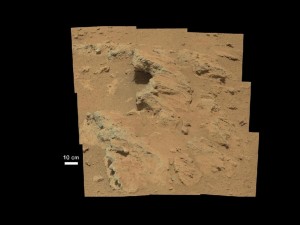From Popular Science:
Scientists have known for almost five years now that the moon is watery–or at least that lots of water molecules are trapped in its crust and its permanently dark, frozen craters. The prevailing theory is that this water comes from molecules in the solar system. But maybe the moon has had water all along, according to a new study of Apollo moon rocks.
Hejiu Hui of Notre Dame, Youxue Zhang of the University of Michigan and their colleagues studied several rocks from the lunar highlands, recovered during the late Apollo missions. One rock was nicknamed the “genesis rock” after Apollo 15 astronauts recovered it on a crater rim. The rock was thought to have come from the moon’s primordial crust.
The researchers used infrared spectroscopy to peer inside the rocks without disturbing them, and were able to analyze the rocks’ water content. It’s not really water, per se, but the related chemical known as hydroxyl, which contains one atom each of oxygen and hydrogen.


